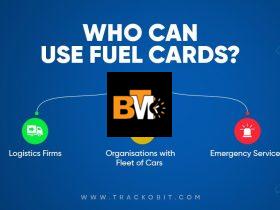Buying or selling property can be a daunting process, especially when it comes to conveyancing. It’s easy to overlook details that might later cause costly delays or legal issues.
Here’s a guide to help you steer clear of common pitfalls, ensuring a smoother journey from start to finish.
1. Not choosing the right conveyancer
The first step in the conveyancing process is selecting a conveyancer. Opting for the cheapest option can lead to subpar service.
It’s vital to choose a qualified professional, like SAM Conveyancing, who is experienced and has a solid reputation.
Their expertise will help guide you through the complexities of property transactions.
2. Failing to check for hidden costs
Conveyancing fees can be straightforward, but additional costs often crop up.
These include searches, surveys, and disbursements. Make sure you understand all potential expenses before proceeding. Discuss these costs upfront to avoid surprises later on.
3. Ignoring property searches
Property searches are crucial in uncovering any legal issues or restrictions attached to the property you’re buying.
Failing to conduct these searches could lead to expensive legal troubles in the future. Always make sure your conveyancer arranges the necessary searches, including local authority and environmental checks.
4. Overlooking leasehold issues
If you’re purchasing a leasehold property, make sure to review the terms of the lease. Hidden clauses, such as high ground rent increases or service charges, can significantly affect your long-term costs.
Don’t rush; ensure you understand the lease details before proceeding.
5. Delays in receiving necessary documents
Conveyancing involves a lot of paperwork, and delays can be frustrating.
It’s important to keep track of required documents and chase up any outstanding paperwork from your solicitor or the other party’s conveyancer.
Delays in documentation can slow down the whole process.
6. Failing to understand your responsibilities
When buying property, you need to fully understand your responsibilities, especially regarding maintenance or any communal areas.
Failing to do so could result in unexpected costs after the purchase. Discuss these aspects in detail with your conveyancer to avoid any misunderstandings.
7. Not budgeting for stamp duty
Stamp Duty is a significant cost when purchasing property, but many buyers overlook this.
Ensure you’re aware of the stamp duty rates applicable to your transaction. Not budgeting for this expense could leave you in a difficult financial situation.
8. Ignoring building regulations
If you’re planning renovations or property development, check that the building complies with local regulations.
Neglecting this can lead to costly fines and potential delays if you need to make changes post-purchase. Always request up-to-date building certificates and documentation.
9. Skipping the final walkthrough
A final walkthrough of the property is essential before you sign the contract.
This is your chance to ensure that everything is in order and that the property matches the condition agreed upon. If you skip this step, you may be surprised by unexpected issues after the sale.
10. Not reading the small print
Finally, always read every document carefully. Even minor clauses can have significant impacts on your purchase. Whether it’s the contract, terms of sale, or insurance policy, ensure you’re fully aware of the terms before signing anything.
Conclusion
While conveyancing may seem overwhelming, understanding common pitfalls and how to avoid them can make the process far less stressful.
By being proactive, choosing the right professionals, and staying on top of essential details, you’ll be able to navigate the process with confidence and security.







Leave a Reply